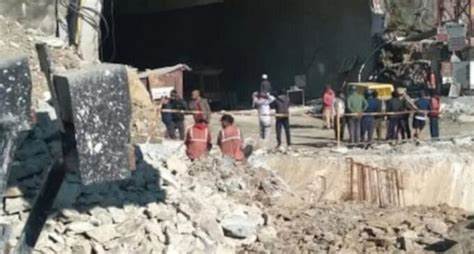First visuals of manual drilling inside collapsed Uttarkashi tunnel to rescue 41 workers released

First visuals of manual drilling inside collapsed Uttarkashi tunnel to rescue 41 workers released
The ongoing rescue efforts for the 41 trapped workers inside the Silkyara tunnel in Uttarakhand’s Uttarkashi have entered a critical phase, with the release of the first visuals of manual drilling. The manual drilling, depicted in the images, is being complemented by the use of an auger machine to push the pipe through the tunnel.
As reported by ANI, approximately two meters of manual drilling has been completed so far. Rat-hole mining experts, enlisted to aid in the rescue operation, initiated manual drilling on Monday, employing specialized techniques to navigate through the rubble inside the tunnel.
Concurrently, vertical drilling from above the tunnel has reached a depth of 36 meters, progressing toward the goal of reaching 86 meters. This combined approach aims to create an access point to reach the trapped workers and facilitate their safe extraction from the tunnel.
The visual updates provide a glimpse into the challenging rescue operation, highlighting the intricate and labor-intensive processes involved in reaching the trapped workers. The successful execution of these drilling efforts is crucial for the timely and safe evacuation of the individuals stuck inside the tunnel. The rescue operation continues to be closely monitored, with hopes for a positive outcome as the efforts progress.
The rescue operation for the 41 trapped workers inside the Silkyara tunnel in Uttarakhand’s Uttarkashi involves the expertise of twelve rat-hole mining experts. These experts are engaged in manual drilling and excavation, working horizontally through the last 10- or 12-meter stretch of debris in the collapsed section of the under-construction tunnel on the Char Dham route.

The decision to employ manual drilling came after a huge auger machine, initially used for the task, became stuck in the rubble on Friday. This setback prompted officials to shift their focus to an alternative method—drilling down from above the tunnel. Currently, about 40 percent of the required 86-meter vertical drilling has been completed.
For the horizontal drilling through the rubble, the final stretch is being handled manually. Individual workers are entering the escape passage with drills and gas-cutters to address obstacles such as iron girders. This manual approach is a meticulous and labor-intensive process aimed at creating a safe and accessible pathway to reach the trapped workers.

The involvement of rat-hole mining experts underscores the specialized skills required for navigating through the challenging conditions within the collapsed tunnel. The collaborative efforts of various teams and the use of different techniques reflect the complexity of the rescue operation and the dedication to ensuring the safe evacuation of the trapped individuals. The situation continues to be closely monitored as the rescue efforts progress.
As of Monday evening, the final section of the stuck auger in the Silkyara tunnel has been cut out piece by piece, allowing for the insertion of a steel pipe further into the partially constructed escape passage. The progress in this aspect of the rescue operation represents a significant development, overcoming challenges faced earlier.
In Delhi, Lt Gen (retd) Syed Ata Hasnain, a member of the National Disaster Management Authority (NDMA), reported that vertical drilling, initiated on Sunday, has reached a depth of 36 meters. The objective is to create a one-meter-wide shaft that will be used to extract the trapped workers once it breaks through the top of the tunnel below. The breakthrough is anticipated by Thursday.
Additionally, an eight-inch wide shaft being drilled from a nearby point has reached approximately 75 meters down. This probe serves a dual purpose, acting as both a supply line for the trapped workers and providing insights into potential geological obstacles for the main shaft.
During the vertical drilling process, some water was encountered underground, leading to a “dewatering” operation. However, officials have reported that this did not significantly impact the overall rescue operation.
The comprehensive approach, combining manual drilling through the debris, vertical drilling, and the creation of auxiliary shafts, reflects the complexity of the rescue efforts. As the operation progresses, continuous monitoring and adaptation to evolving conditions are crucial for a successful and safe extraction of the trapped workers from the Silkyara tunnel.
Two teams of experts, consisting of seven and five individuals, skilled in the technique of rat-hole mining have been enlisted by two private companies involved in the rescue operation at the Silkyara tunnel in Uttarakhand. Rat-hole mining, although controversial and hazardous, involves miners working in small groups to excavate small quantities of coal from narrow burrows.
It’s important to note that the individuals brought to the site for the rescue operation are described as experts in the rat-hole mining technique, not rat-hole miners themselves. Neeraj Khairwal, the Uttarakhand government’s nodal officer, clarified that these experts would be organized into teams of two or three, each entering the steel chute laid into the escape passage for brief periods.
The use of experts in rat-hole mining suggests a specialized skill set that may be valuable in navigating through the challenging conditions within the collapsed tunnel. The rescue operation continues to involve a combination of manual drilling, vertical drilling, and the expertise of specialized teams, reflecting the complexity and multi-faceted nature of the efforts to reach and extract the trapped workers.







